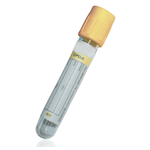Suitable Specimen Types
- Serum
- Li Hep Plasma
Specimen Transport
Not applicable
Sample Processing in Laboratory
No special requirements
Sample Preparation
Centrifuge sample on arrival
Turnaround Time
1 daySample Stability
4ºC
Magnesium (serum)
General Information
Magnesium is an intracellular cation. It is essential for enzyme activity, for the synthesis of nucleic acids and proteins, and has an important physiological role in the neuromuscular and cardiovascular systems. Total body magnesium is approximately 1000 mmols, of which 60% is in bone, 20% in skeletal muscle, and less than 1% in the extracellular fluid. In the circulation, 65% of serum magnesium is free (ionised), about 20% is protein bound, and the rest is complexed with various anions (eg: phosphate and citrate). The body magnesium balance is regulated by intestinal absorption (predominantly in the ileum and colon), and renal reabsorption (65-75% by the thick ascending loop of Henle, 15-20% in the proximal tubules).
The most commonly used method for assessing magnesium status is serum magnesium concentration. Spot or 24-hour urine magnesium may be useful in determining renal or intestinal wasting especially in the setting of hypomagnesaemia.
Hypomagnesaemia is common (7-11%) in hospital patients, and the prevalence is higher in critically ill patients. It often coexists with other electrolyte disturbances, especially in the setting of hypokalaemia, hypophosphataemia, hyponatraemia, or hypocalcaemia. Low serum magnesium may be a cause of hypocalcaemia due reduced PTH secretion and activity. Hypermagnesaemia most commonly occurs due to excessive administration of magnesium salts or magnesium-containing drugs (eg: antacids), especially in patients with renal impairment. Mild elevations of serum magnesium are usually asymptomatic. Hypotension and depressed reflexes can be seen with concentrations over 3 mmol/L. Very high serum magnesium concentrations are usually iatrogenic with serum levels > 4mmol/L associated with paralysis, hypotension, bradycardia, cardiac arrest.
Patient Preparation
None
Notes
Haemolysed samples are unsuitable for magnesium analysis
Reference Range
Neonate (<4wks) 0.6-1.0 mmol/L
4wks - 16yrs 0.7-1.0 mmol/L
Adult 0.7-1.0 mmol/L
(Source : Pathology Harmony Recommendations)
Specifications
- EQA Scheme?: Yes
-
EQA Status:
UK NEQAS Clinical Chemistry scheme
